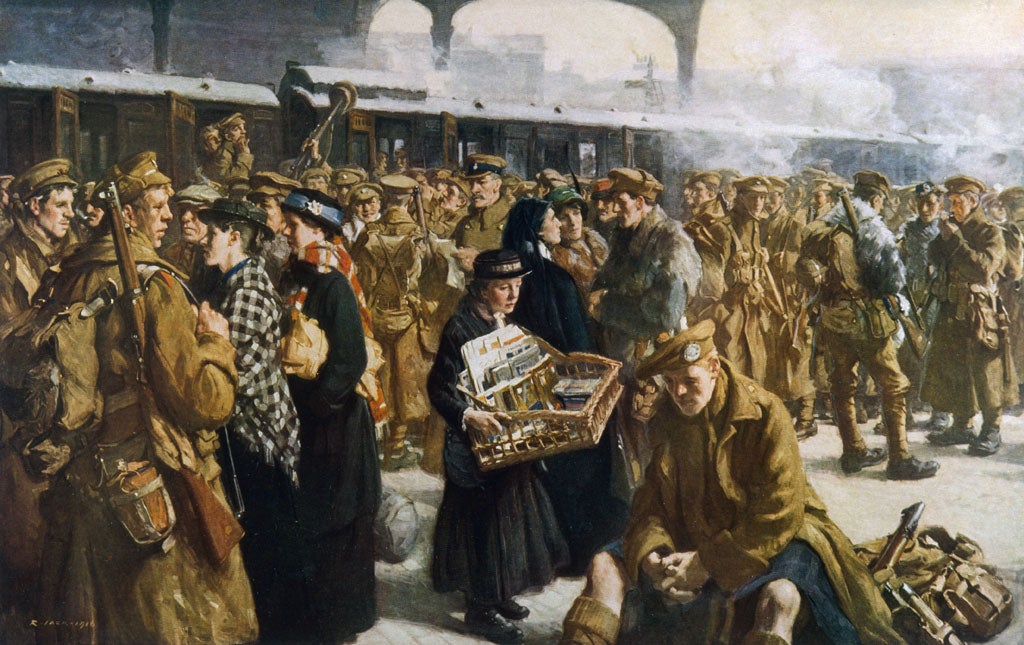Toby's Room, By Pat Barker
This novel about the Great War re-enters the shattered terrain of Barker's acclaimed trilogy

Your support helps us to tell the story
From reproductive rights to climate change to Big Tech, The Independent is on the ground when the story is developing. Whether it's investigating the financials of Elon Musk's pro-Trump PAC or producing our latest documentary, 'The A Word', which shines a light on the American women fighting for reproductive rights, we know how important it is to parse out the facts from the messaging.
At such a critical moment in US history, we need reporters on the ground. Your donation allows us to keep sending journalists to speak to both sides of the story.
The Independent is trusted by Americans across the entire political spectrum. And unlike many other quality news outlets, we choose not to lock Americans out of our reporting and analysis with paywalls. We believe quality journalism should be available to everyone, paid for by those who can afford it.
Your support makes all the difference.Pat Barker's heart-rending return to the trauma of the Great War opens in foreshadowing of loss. The date is 1912 and Toby is already vanishing. Elinor, looking round in a casual way for her brother, finds he's "not there". Later, down with pneumonia, he "vanished into his illness". Finally, in 1917 a telegram arrives: "Missing, Believed Killed". Toby's effects are sent home. His reeking uniform preserves a ghost of his body-shape. From the beginning, Toby is a mortal and fugitive presence, his relationship with Elinor full of imponderables. In Toby's Room, both the living and the dead haunt and elude us.
"What do we seek through millions of pages?" asked Virginia Woolf's narrator in Jacob's Room (1922), her elegy for her beloved brother, Thoby. "Oh, here is Jacob's room." A room, yes, but no Jacob. Where is he? Who was he? How did we come to lose him? The narrator cannot say.
Get money off this book at the Independent book shop
Woolf's novel concludes in the discovery of a "pair of Jacob's old shoes". In Toby's Room, partly a homage to Woolf, Barker re-enters the shattered terrain of her trilogy, Regeneration, The Eye in the Door and The Ghost Road, and revisits the Slade artists explored in Life Class.
What's the use of art? A mnemonic, a commemoration, a reconstruction? It is in bathos and irony that the obscene events on the Continent are recorded: from the English Downs, Woolf heard "the dull sound" of guns, "as if nocturnal women were beating carpets". Woolf herself appears as a glimpsed character at Charleston in Toby's Room, which, like Barker's other fiction, mingles factual with fictional persons.
Barker, unlike Woolf, accepts classic realist conventions. I'd forgotten what a superb stylist she is, at once forensically observant and imaginatively sublime. Elinor, a Carrington-like artist and rebel, is studying at the Slade under Henry Tonks, the painter of casualties undergoing revolutionary new techniques of plastic surgery.
The core of Toby's Room is sister-brother love whose intensity transgresses the boundary of sibling love. Phrasings are arresting: the sensuality of Toby's "groping, sea-anemone mouth", an image of blind, Darwinian compulsion; skin in moonlight "with the glitter of salt". Orgiastic imagery prefigures the killing fields in an extraordinary way. Scissor-blades "mouthed thick clumps of hair like a snake struggling to ingest a rat". All is recorded in Barker's incomparable third-person free indirect technique, slipping in and out of characters' thoughts that "floated to the surface ... and burst like bubbles": cool, assured and virtuosic. The interpolated diary elements add little to this intimate address.
A mounting wave of prolepsis builds relentlessly by tiny stages, a wave that will crest on the Western Front. Elinor, performing anatomical dissections for her life-studies, takes apart the cadaver of "the unknown man". Through her art, Elinor seeks to retrieve a dismembered self, embarking on the immemorial journey of Isis to collect the parts of a brother into a whole.
The mythic quality of her search is heightened by the linked twin and androgyne themes. Toby was born with a dead "papyrus twin", a dark scroll-like girl, whose place Elinor takes. Like Shakespearean twins, the living girl mirrors a dead boy. But art fails; Elinor fails. We know how to take a man apart. But how do we put him back together? The restoration of a destroyed face is an obsession of Toby's Room: the artist, Kit Neville, undergoes facial reconstruction, "a man with a penis where his nose should be". In a searing scene at the Cafe Royal, masked to conceal his monstrous face, Kit begins "to roar, the bellow of a wounded bull", ripping off the mask. Then he cries, "a puppy howl of abandonment and loss". Then he laughs.
On every level, Toby's Room anatomises a world where extreme emotion shatters the boundaries of identity, behaviour, gender. Through the mask of Apollo bursts an omnipresent Dionysus.
I only wish Barker would bring her prodigious gifts to bear on a more recent war: we need to hold the mirror of her art to the "hideously disfigured face" of the here and now.
Join our commenting forum
Join thought-provoking conversations, follow other Independent readers and see their replies
Comments